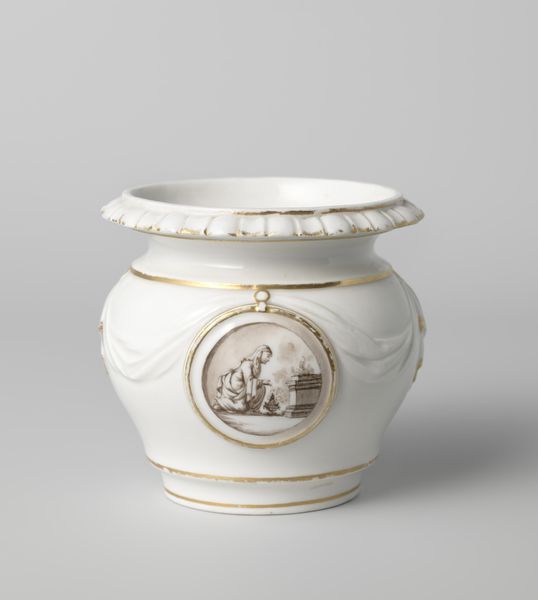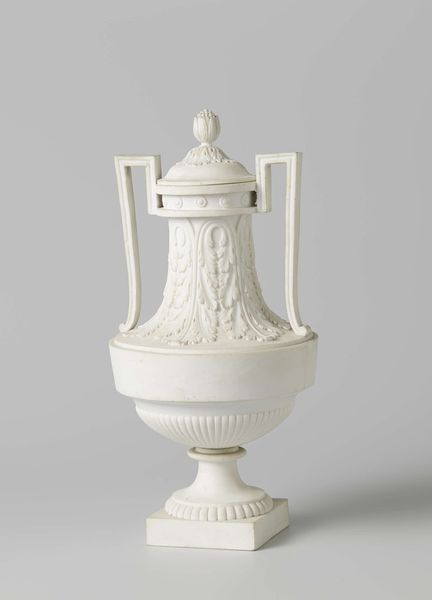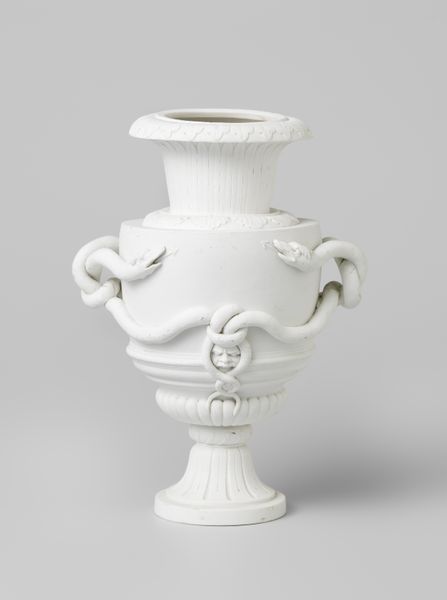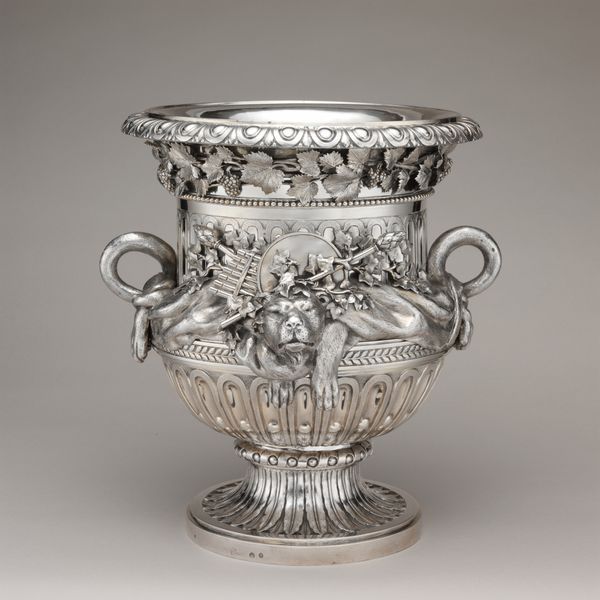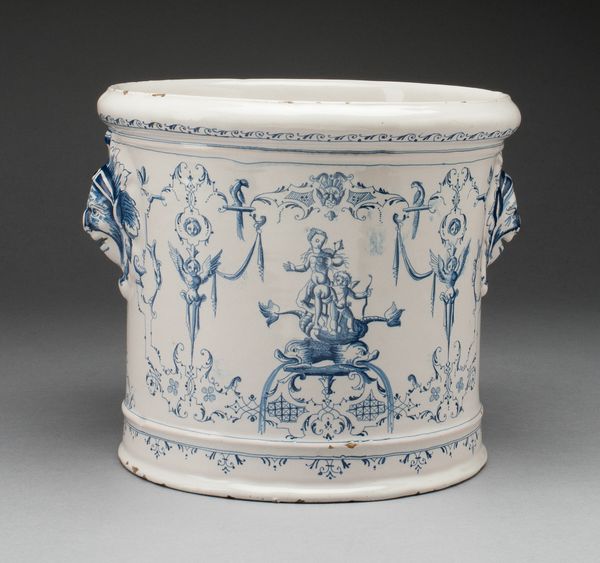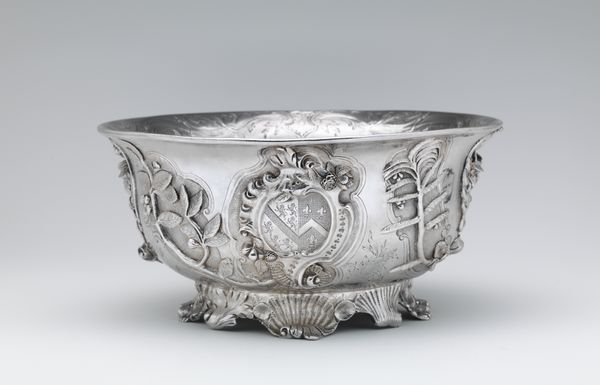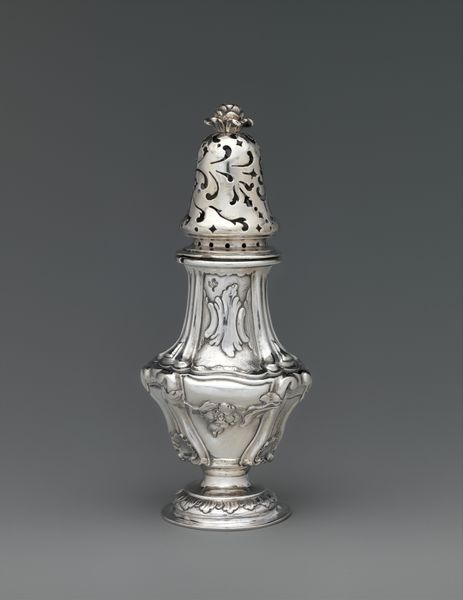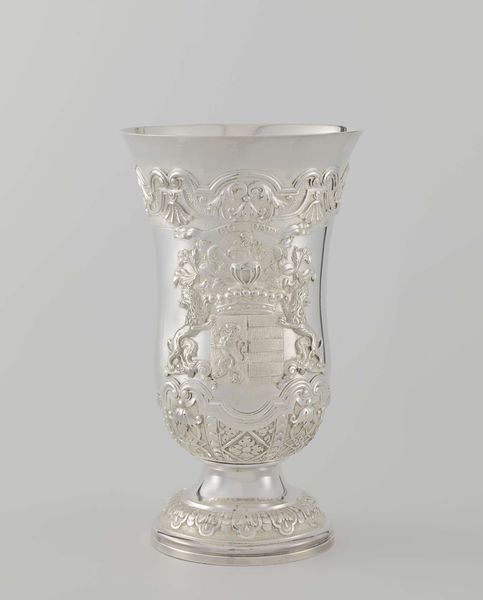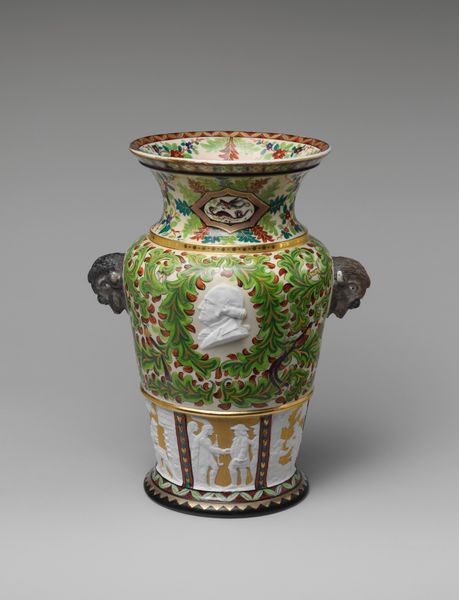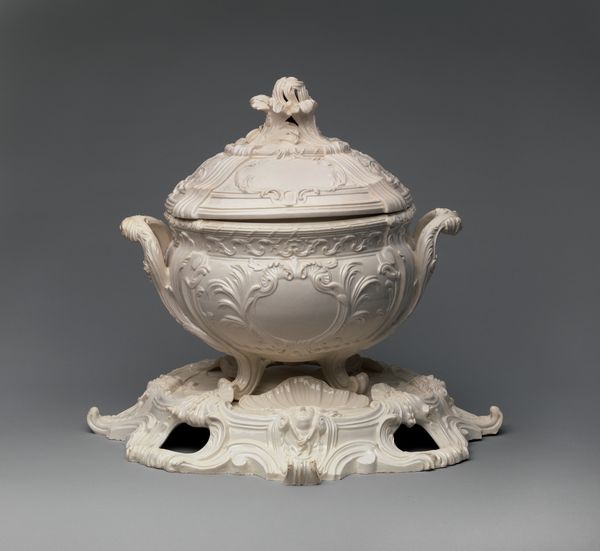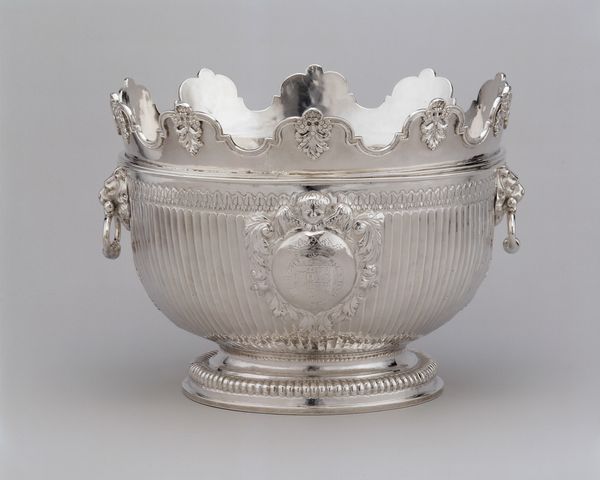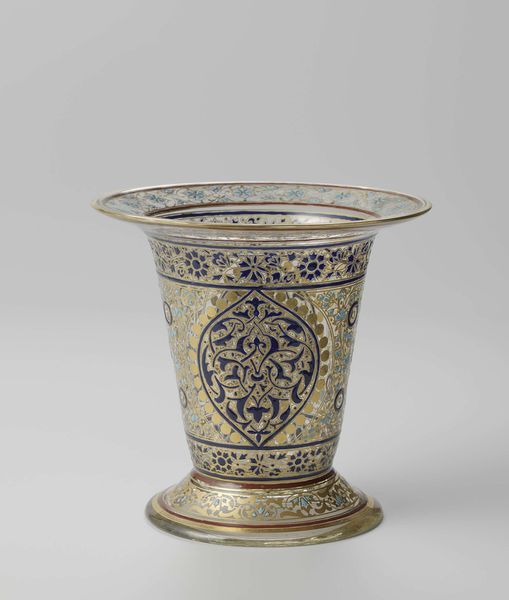
ceramic, porcelain, sculpture
#
baroque
#
ceramic
#
porcelain
#
sculpture
#
ceramic
#
decorative-art
Dimensions: Overall (confirmed): 5 7/16 × 4 11/16 × 4 11/16 in. (13.8 × 11.9 × 11.9 cm)
Copyright: Public Domain
Editor: Here we have a porcelain vase created sometime between 1708 and 1725 by the Meissen Manufactory. It's currently housed in the Metropolitan Museum of Art. The white glaze is so striking! What are your thoughts on this piece? Curator: It’s interesting to consider the means of production here. Meissen porcelain was one of the earliest European manufacturers to successfully produce porcelain, breaking the Chinese monopoly. Think about the material challenges – controlling the high firing temperatures, sourcing the kaolin clay – and the social implications of European elites suddenly having access to this coveted material. What does luxury production mean for labour in this era? Editor: That's a perspective I hadn't fully considered. So you're saying that beyond the vase as a beautiful object, its value is intertwined with the story of its making? Curator: Precisely. This isn't just decorative art; it’s a testament to ingenuity, resourcefulness, and the desire to replicate and consume globally traded goods. Notice how the sculpted details borrow from classical motifs. This elevates the object beyond simple utility. This object signals a shift in manufacturing capability and social standing. Editor: So it reflects both technical achievement and a shifting cultural landscape? It's like looking at technology of the era. Curator: Exactly. Porcelain’s value isn’t intrinsic but deeply connected to the processes and societal context that birthed it. Editor: This vase isn’t just something pretty to look at, but an important cultural marker from a crucial period of manufacturing. Thanks! Curator: Indeed! Seeing it in terms of materials, processes, and the labor behind them, allows us to read the object as more than mere ornamentation. It offers valuable insights into early 18th century European ambition.
Comments
No comments
Be the first to comment and join the conversation on the ultimate creative platform.

